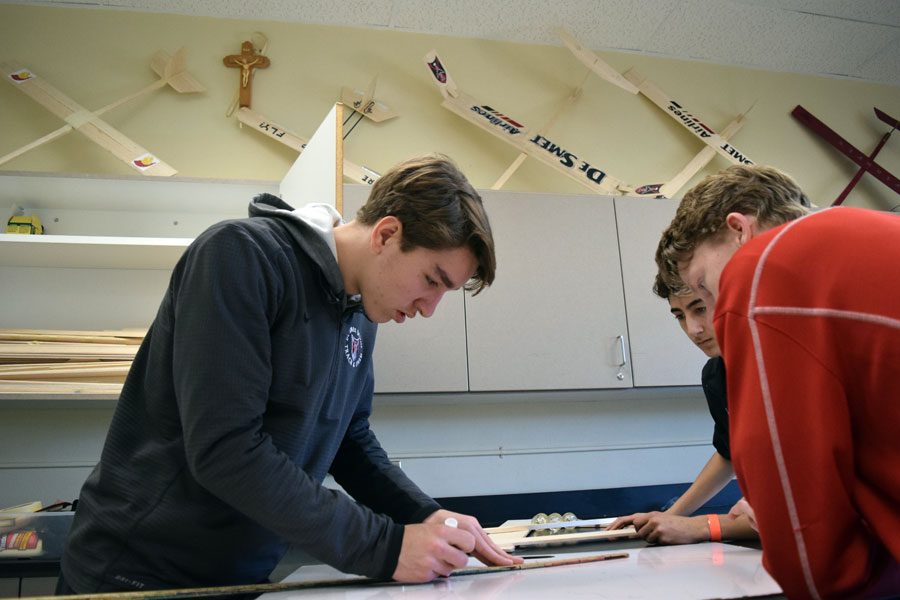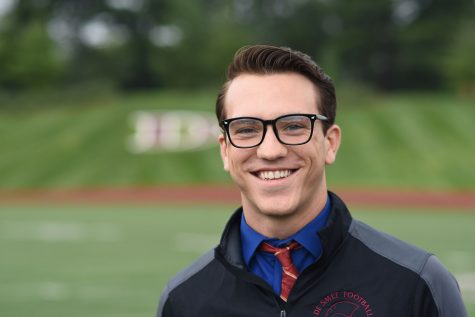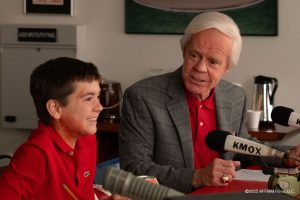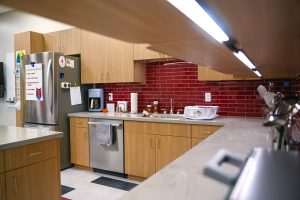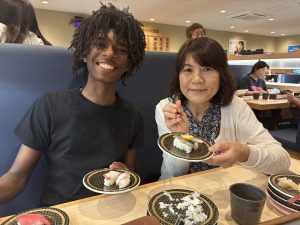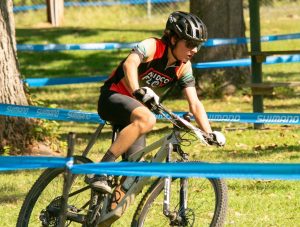Engineering club preps for Boeing Engineering Challenge
Seniors Christian Weishaar, Sal Alu and Tyler O’Connor draw out plans for their glider, which is designed to carry rubber balls for the Boeing Engineering Competition.
March 14, 2017
The Engineering Club will compete for the third straight year in the Boeing Engineering Challenge at Washington University April 29.
Students in the club have been working on their projects since January, and are still making improvements. Throughout that process, they had the opportunity to work alongside Boeing aerospace engineers, who helped them with design and structure.
“The best part is knowing that the engineers will give them the best advice,” engineering club moderator Joseph Feld said. “We know they have done it before. ”
Three teams in the engineering club are building gliders to compete in the competition. Twenty-five other teams in the St. Louis Metro Area are doing the same. A trophy this year would be a first for the club.
The club has three teams going into two different divisions. Division one is building a glider and testing the distance that it travels. Division two is building a cargo plane that has to carry light bouncy balls over a certain distance. The requirement is to carry four balls, but the club’s teams are hoping to be able to carry eight.
“My team just finished up our design for our glider,” senior Christian Weishaar said. “We have a lot of capable guys, so I’m confident that we’ll be able to build what we envision in the coming weeks.”
Come competition day, the teams will demonstrate their gliders to Boeing engineers and the teams competing.
Division one teams will be judged on how far and straight their glider travels. Division two will do the same, but instead of throwing, they have to carry as many balls as they can.
“It would be awesome to win,” Feld said. “On top of that, though, I’m looking at how much the guys learned in the process of making these gliders.”
At the competition, students will present their gliders to Boeing engineers in the form of a powerpoint explaining their design and process. Feld looks forward to the event every year for the hands-on experience that it provides.
“It is a good way for the kids to get up and speak to the engineers,” Feld said. “It also can make the students feel more comfortable because they are talking to real-world engineers. That is a great way to learn the field of engineering.”

